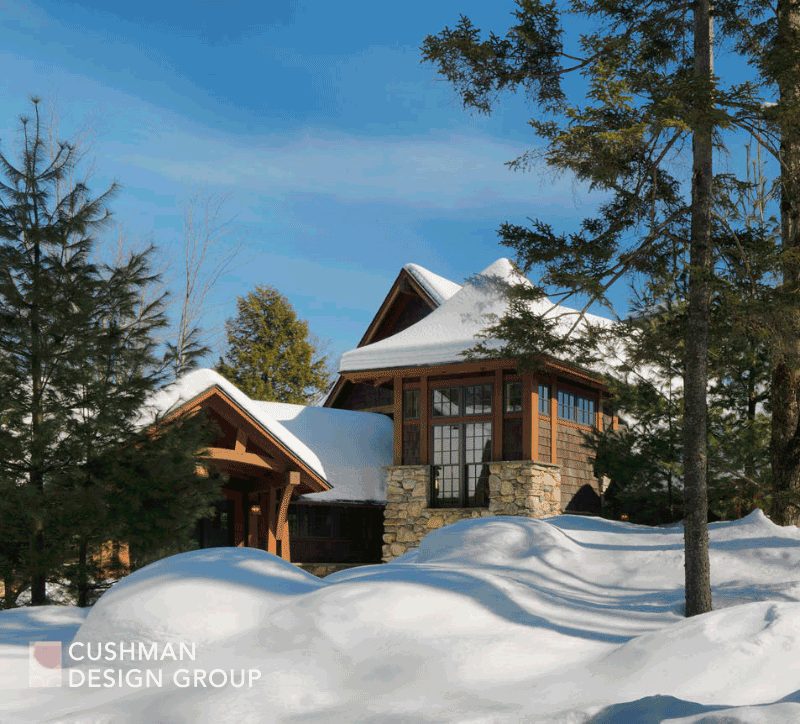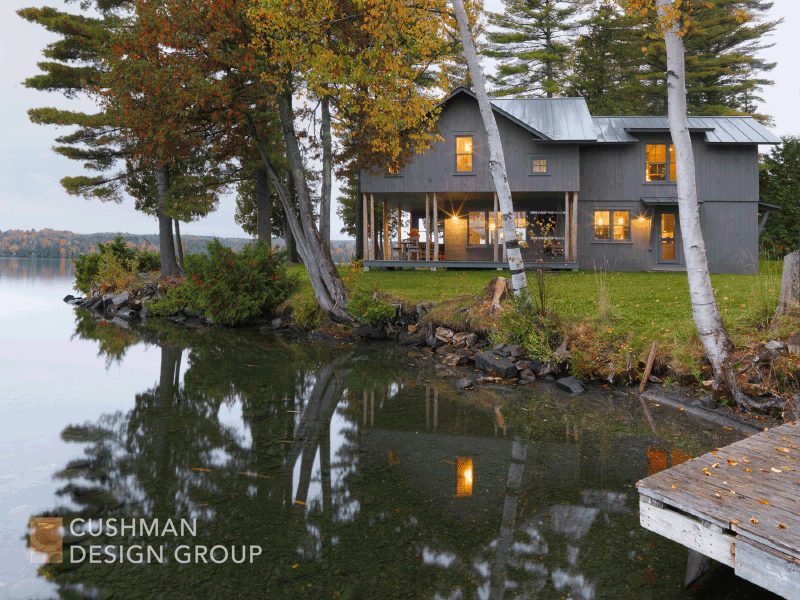Five Essential Elements for a Home that Nurtures the Spirit
August 1, 2019
Sponsored Content
Text by Debra Judge Silber Photography by Susan Teare and Jim Westphalen
If you’re planning a new home or remodel, your list of must-haves probably includes a specific number of bedrooms and baths, a well-equipped kitchen, and space to entertain friends and family. Maybe it includes a breathtaking view, or a grand entryway.
But consider, for a moment, what really evokes contentment in the places that you love. What is it, really, that enables you to feel happy and at ease when you cross that threshold?
To Stowe, Vermont-based Architectural Designer Milford Cushman, designing a great home isn’t about expansive square footage or a jaw-dropping entryway. It’s about identifying what is special—sacred, even—in our everyday experiences. It’s asking, says Cushman, “What are the qualities of those places, those senses, that offer moments of poetry for you in everyday life?” It is this mindful, human-centered approach to designing and renovating homes that Cushman, his wife, Terri Gregory, and their team at Cushman Design Group have applied to more than 1,000 projects across the country. Over more than three decades, Cushman has found names for these qualities. He calls them Comfort, Beauty, Efficiency, Prospect, and Refuge.
Comfort
Comfort, to many of us, is a cushy couch and a warm blanket. When applied to a whole house, its definition expands. “It means places that allow us to really be ourselves, either by ourselves or with our family,” Cushman explains. Invoking this quality in a home means paying attention to the intimacy of spaces while introducing elements we associate with comfort: soft furniture, rugs, fireplaces. And while we may not think of natural materials such as stone or wood as “comfortable,” Cushman says they calm us subconsciously by reminding us of solidity and renewal. Because CDG designs the interiors of most of their homes, they can carry comfort cues from the architecture down to the level of touch—to fabrics that soothe and colors that feel “right” not only for the place we’re in, but that match our personal tastes.
Beauty
Cushman recognizes that our perception of beauty is also highly personal, which leads to a whole raft of questions for clients. “We ask, literally, ‘What is beautiful to you?’ Because each of us has a different sense of what that means,” he says. Like comfort, beauty is the sum of many parts—color, texture, shape—even sound—that conspire to delight us. “The human spirit is intrigued with variety, with shadow and highlight, with texture,” Cushman observes, and so it is not just beautiful materials that create a remarkable space, but the craftsmanship that brings them together in unique ways.
And it’s not just the expensive stone countertop or handcrafted dining table. “Beauty also has everything to do with our appreciation of where the sun comes up in the morning, our ability to access the outdoors, of being able to open windows and doors and hear the birds,” Cushman notes, all which need to be considered in creating a beautiful home.

Photo by Susan Teare
Efficiency
To most of us, “efficiency” means energy efficiency. But what’s often overlooked, Cushman points out, is that efficiency begins with designing right-sized spaces. “We pride ourselves on being able to design ‘just-big-enough’ spaces that are totally functional,” he says. If the budget is tight, a well-defined space is more economical; if money is no object, a house that’s ‘just big enough’ allows a budget for higher craftsmanship—more beauty, that is. Smart-sized homes not only function better and require less material, they also take less energy to heat and cool. When their design exceeds today’s energy codes, their demands on the planet are reduced even more.
“I try to inspire our clients to think beyond their own tenure in the building we’re designing for them,” Cushman says. It’s a goal that’s as good for our own sense of wholeness as it is for the environment.
Prospect and Refuge
There’s nothing like taking in the view of a mountain from your back porch, just as there’s nothing like curling up with a book in a sheltered nook. Prospect—the ability to see out and take in a view of all that surrounds us—and Refuge—the sense of being in a protected space—are complementary elements that tap deeply into our psychology and our biology. Prospect brings us to the edge with a sense of discovery and daring. Refuge provides a sanctuary when we feel the need to be safe. The border between the two, Cushman explains, is where the magic happens. In the natural world, it is in these places—where forest meets field, where river meets ocean—that life explodes. It has a human aspect, too.
“I think one of the delights of the interplay between prospect and refuge is that the human spirit is delighted in having options,” Cushman says. “We can choose what to experience next.”
Cushman’s view of home design as more than floorplans and fixtures might seem unusual. But that’s the point. “Our best clients recognize that what we bring to their lives is our wisdom,” he says. “That wisdom is more than building a good, sturdy, energy-efficient, handsome building. It’s really about the intangibles.”
Share
![NEH-Logo_Black[1] NEH-Logo_Black[1]](https://b2915716.smushcdn.com/2915716/wp-content/uploads/2022/08/NEH-Logo_Black1-300x162.jpg?lossy=1&strip=1&webp=1)















You must be logged in to post a comment.